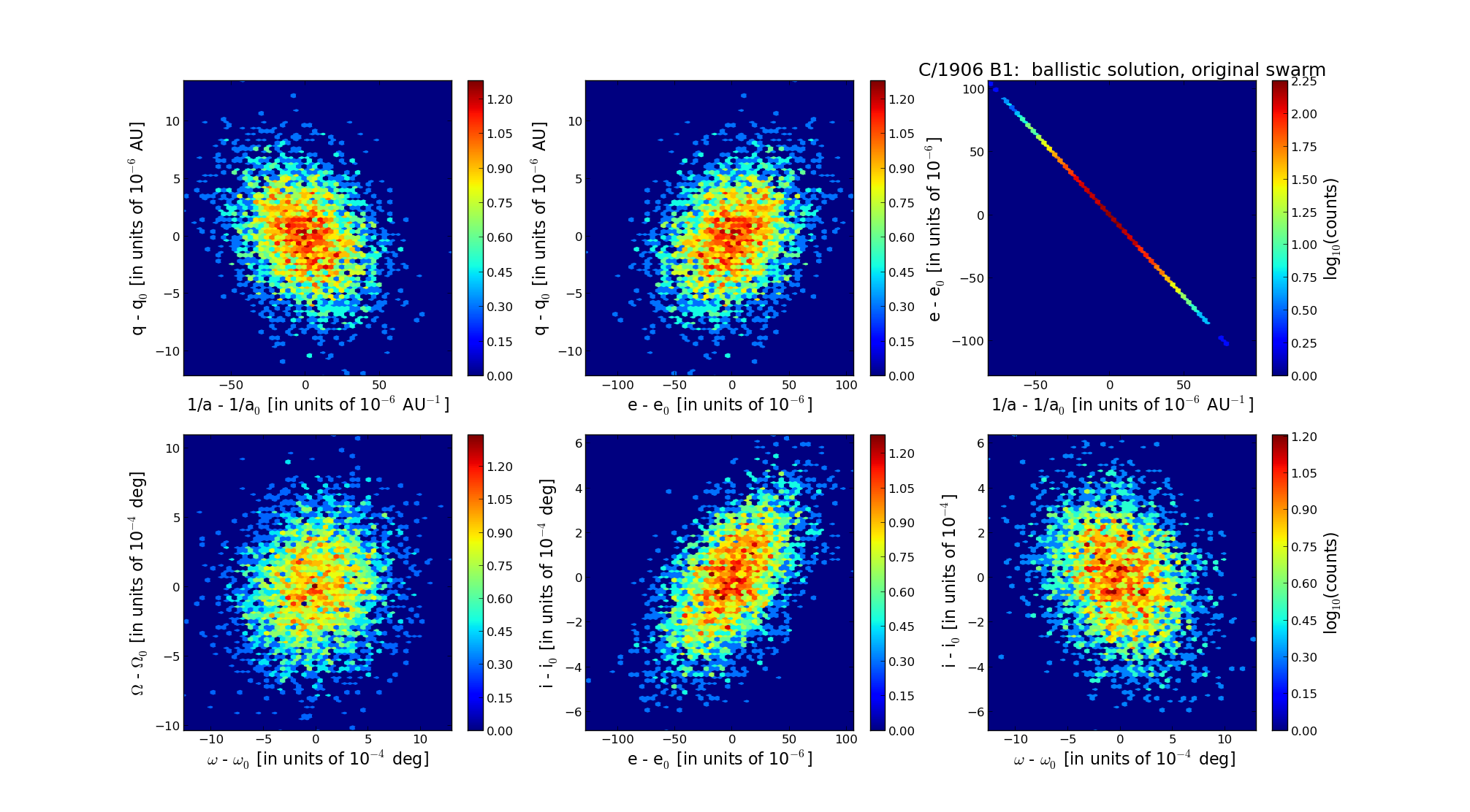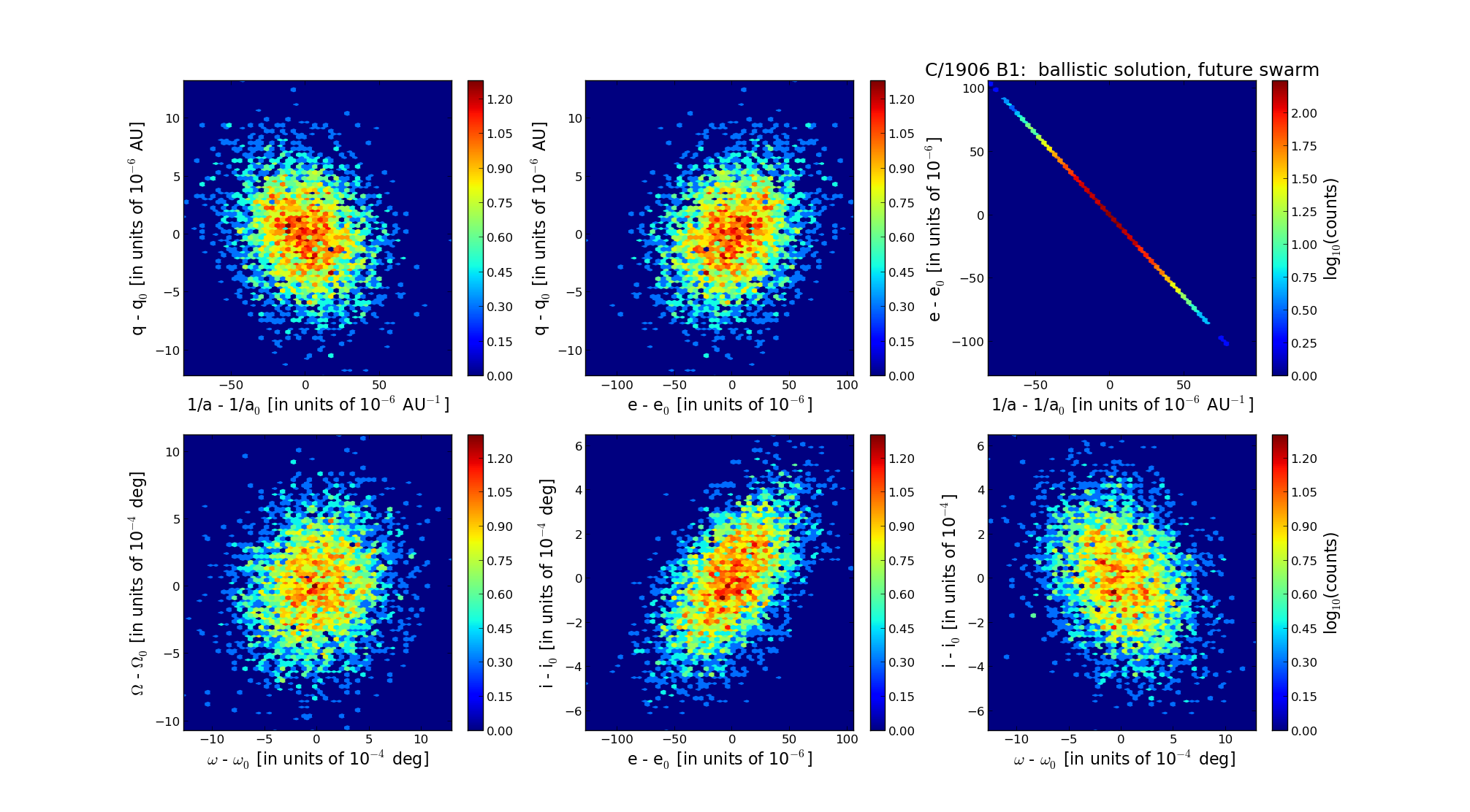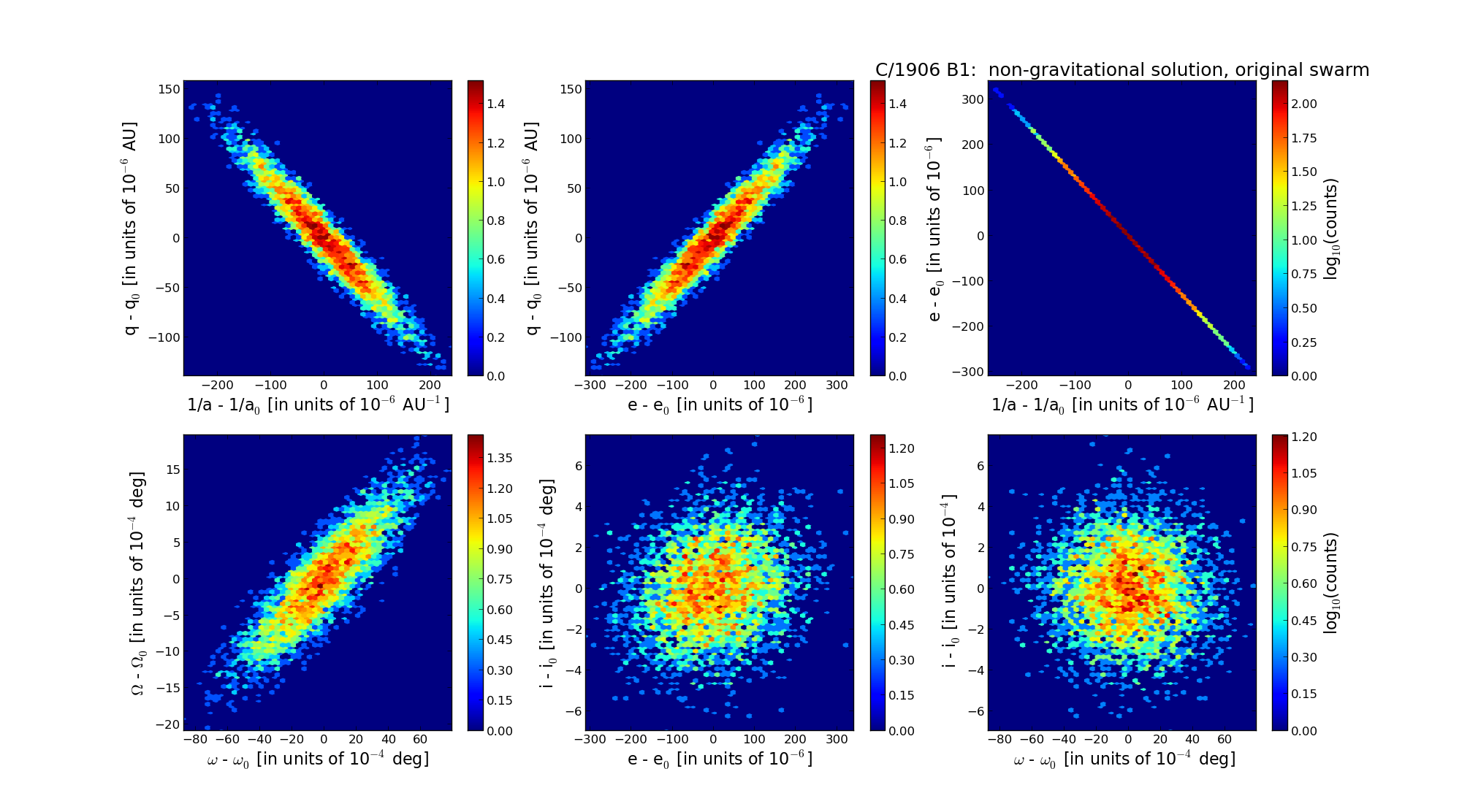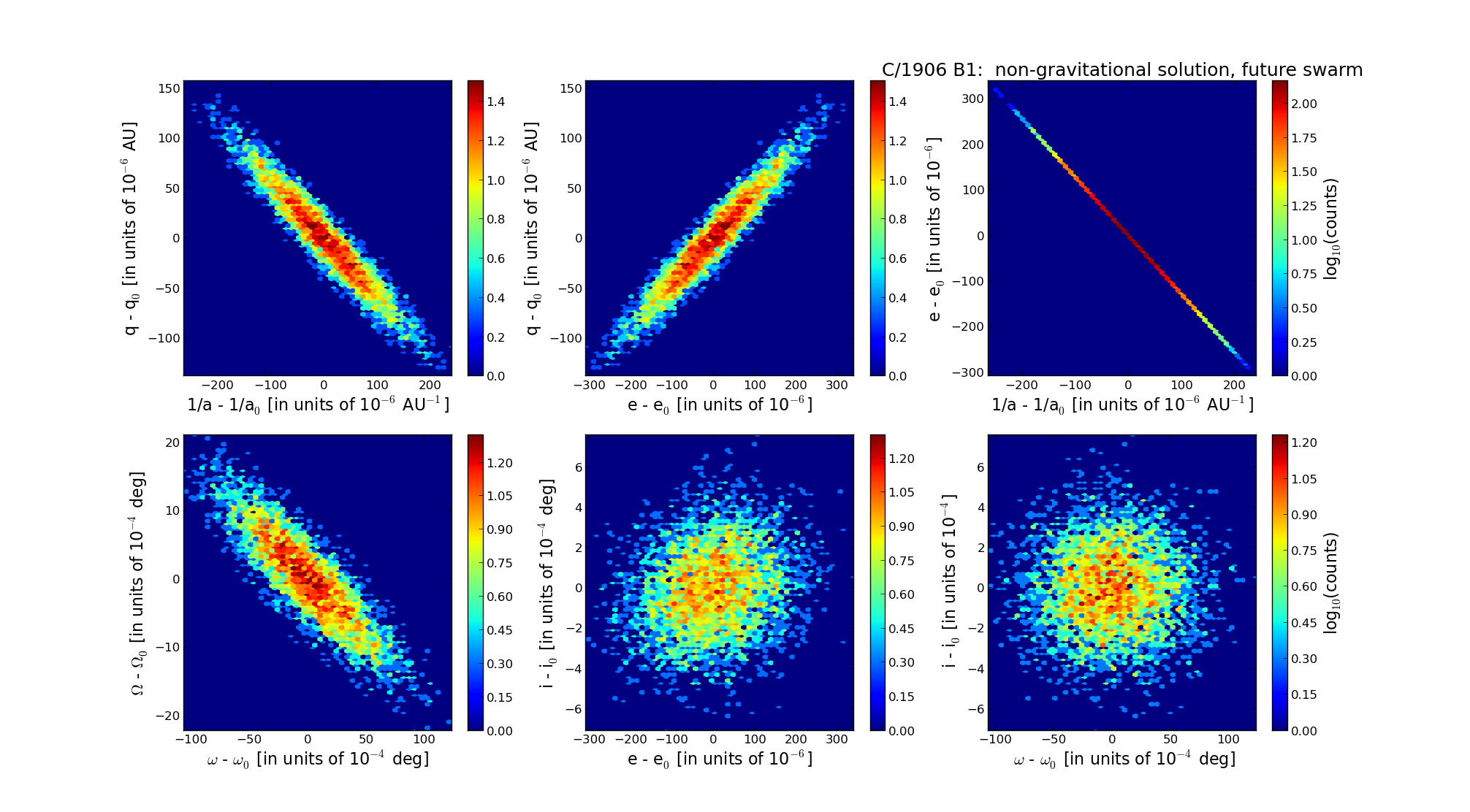| Solar System Dynamics & Planetology Group |
 |
C/1906 B1 Brooks |  |
| Solar System Dynamics & Planetology Group |
 |
C/1906 B1 Brooks |  |
| number of observations | 267 |
| number of residuals | 450 |
| data interval | 1905 July 23 — 1906 Apr. 25 |
| rms [arcsec] | 3.07 |
| orbit quality class | 2a |
| Epoch (TT) | 19051221.0 | = JD 2417200.5 |
| time of perihelion passage (TT) | 19051222.834099 | ± 0.000635 |
| perihelion distance | 1.29656822 | ± 0.00000329 |
| eccentricity | 1.00118940 | ± 0.00002875 |
| argument of perihelion [deg] | 89.875094 | ± 0.000333 |
| longitude of the ascending node [deg] | 287.700661 | ± 0.000299 |
| inclination [deg] | 126.443151 | ± 0.000191 |
| inverse semimajor axis [10-6 au-1] | -917.34 | ± 22.17 |

| Epoch (TT) | 16081107 | |
| time of perihelion passage (TT) | 19051222.176515 | ± 0.000916 |
| perihelion distance | 1.29645026 | ± 0.00000337 |
| eccentricity | 1.00017579 | ± 0.00002976 |
| argument of perihelion [deg] | 89.834094 | ± 0.000348 |
| longitude of the ascending node [deg] | 287.548057 | ± 0.000302 |
| inclination [deg] | 126.511964 | ± 0.000197 |
| inverse semimajor axis [10-6 au-1] | -135.59 | ± 22.96 |

| Epoch (TT) | 22000329 | |
| time of perihelion passage (TT) | 19051224.093101 | ± 0.000459 |
| perihelion distance | 1.28893207 | ± 0.00000338 |
| eccentricity | 1.00051887 | ± 0.00002960 |
| argument of perihelion [deg] | 89.763925 | ± 0.000344 |
| longitude of the ascending node [deg] | 287.836952 | ± 0.000313 |
| inclination [deg] | 126.593908 | ± 0.000199 |
| inverse semimajor axis [10-6 au-1] | -402.56 | ± 22.96 |
| number of observations | 267 |
| number of residuals | 449 |
| data interval | 1905 July 23 — 1906 Apr. 25 |
| rms [arcsec] | 3.05 |
| orbit quality class | 2a |
| Epoch (TT) | 19051221.0 | = JD 2417200.5 |
| time of perihelion passage (TT) | 19051222.827139 | ± 0.001939 |
| perihelion distance | 1.29649411 | ± 0.00001882 |
| eccentricity | 1.00071452 | ± 0.00012808 |
| argument of perihelion [deg] | 89.873443 | ± 0.000523 |
| longitude of the ascending node [deg] | 287.702585 | ± 0.000592 |
| inclination [deg] | 126.443226 | ± 0.000188 |
| inverse semimajor axis [10-6 au-1] | -551.12 | ± 98.79 |
| Nongravitational parameters [10-8 au/day2] | A1 = 7.32320 ± 1.84110 | A2 = 0.00000 ± 0.00000 | A3 = 0.00000 ± 0.00000 |

| Epoch (TT) | 16060102 | |
| time of perihelion passage (TT) | 19051222.173035 | ± 0.001408 |
| perihelion distance | 1.29627992 | ± 0.00004429 |
| eccentricity | 0.99984792 | ± 0.00009573 |
| argument of perihelion [deg] | 89.843280 | ± 0.002419 |
| longitude of the ascending node [deg] | 287.549903 | ± 0.000595 |
| inclination [deg] | 126.512022 | ± 0.000192 |
| inverse semimajor axis [10-6 au-1] | 117.32 | ± 73.86 |

| Epoch (TT) | 22021224 | |
| time of perihelion passage (TT) | 19051224.081525 | ± 0.003074 |
| perihelion distance | 1.28876275 | ± 0.00004399 |
| eccentricity | 1.00019277 | ± 0.00009521 |
| argument of perihelion [deg] | 89.750691 | ± 0.003441 |
| longitude of the ascending node [deg] | 287.838945 | ± 0.000635 |
| inclination [deg] | 126.593965 | ± 0.000194 |
| inverse semimajor axis [10-6 au-1] | -149.58 | ± 73.87 |